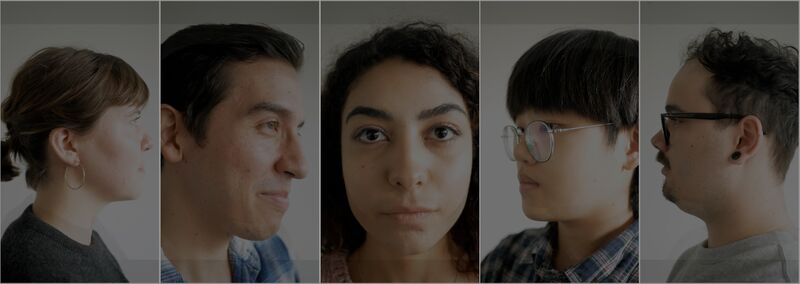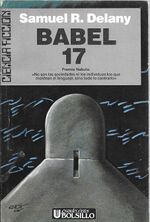User:Aitantv/Interview: Difference between revisions
No edit summary |
No edit summary |
||
| (21 intermediate revisions by the same user not shown) | |||
| Line 1: | Line 1: | ||
I'm making a video titled ABC where five people | I'm making a video titled ABC where five people utter the alphabet of their native language. I'm toying with the ways I can visualize this process: will all the subjects be in the video? Could the alphabet be animated? Would simple text communicate the message? The struggle we have with language is a key theme. As a child it took a lot of work for my utterances to be deemed acceptable by teachers. In language there are inbuilt power relations: the more skilled orator, for instance, is more likely to win an argument. One can use the technology to their advantage, but there is a constant negotiation between utterance and meaning, trying to find the best words to translate and convey emotion. | ||
[[File:ABC_OFFLINE_V01_Still_01.jpg|800px|centre]] | |||
In ABC, multiple languages co-exist in the same context. By engaging in dialogue we open ourselves to the threat of miscommunication. As the number of languages multiply the risk of miscommunication increases. For instance, in my relationship with a Dutch speaker I believe many of our conflicts rest upon cultural differences encoded in our language systems. With a background in Anthropology, I’m interested in how culture effects our ways of relating and perceiving, with language being a significant cultural meme, perhaps even a military weapon as expressed in Samuel Delany's Babel 17. | |||
[[File:Babel 17 Cover .jpg|150px|centre]] | |||
By using a metronome during filming, the subjects appear to utter their alphabets in synchronization – five individuals become one organism. How can I visually translate this idea? One idea is a bulbous pound of goo with letters trying to penetrate the surface. My broader methodology is Regurgitation, where multiple inputs are internalized by the artist and then spat out in a consolidated new form. As a bodily process, it involves exporting inputs with the addition of the host’s saliva, fat cells, DNA and so on. The content is thus reproduced, not replicated. By fusing five different subjects and languages into one form a new mode of communication is temporarily formed. | By using a metronome during filming, the subjects appear to utter their alphabets in synchronization – five individuals become one organism. How can I visually translate this idea? One idea is a bulbous pound of goo with letters trying to penetrate the surface. My broader methodology is Regurgitation, where multiple inputs are internalized by the artist and then spat out in a consolidated new form. As a bodily process, it involves exporting inputs with the addition of the host’s saliva, fat cells, DNA and so on. The content is thus reproduced, not replicated. By fusing five different subjects and languages into one form a new mode of communication is temporarily formed. | ||
Another feature of the video is the framing. The five subjects are filmed from different angles to add dimensionality. I’m looking to find ways of making the photographic image more physical, tangible, and 3D. I’m particularly interested in contrasting CGI with live action footage to raise questions about the believability of different modes of image making. Is a hyperreal rendering of a kilo of clay being fisted more captivating than a live action recording or a live reenactment? I want to explore the technical constraints and symbolic borders of photographic image making. How close (or far) is it from the real? | Another feature of the video is the framing. The five subjects are filmed from different angles to add dimensionality. I’m looking to find ways of making the photographic image more physical, tangible, and 3D. I’m particularly interested in contrasting CGI with live action footage to raise questions about the believability of different modes of image making. Is a hyperreal rendering of a kilo of clay being fisted more captivating than a live action recording or a live reenactment? I want to explore the technical constraints and symbolic borders of photographic image making. How close (or far) is it from the real? | ||
These constraints are what connect language and image-making. Video condenses an entire assemblage of players and objects into minuscule files stored on hardrives. Language translates anecdotes, ideas, emotions, feelings, nodes of consciousness, but what is missing? With every translation something is left behind. We can’t assume to know the other with language as our primary tool. I'd like to locate the limitations of these technologies, expose their shortcomings while exhibiting the incredible power built into these tools. | These constraints are what connect language and image-making. Video condenses an entire assemblage of players and objects into minuscule files stored on hardrives. Language translates anecdotes, ideas, emotions, feelings, nodes of consciousness, but what is missing? With every translation something is left behind. We can’t assume to know the other with language as our primary tool. I'd like to locate the limitations of these technologies, expose their shortcomings while exhibiting the incredible power built into these tools. | ||
Latest revision as of 15:28, 13 October 2021
I'm making a video titled ABC where five people utter the alphabet of their native language. I'm toying with the ways I can visualize this process: will all the subjects be in the video? Could the alphabet be animated? Would simple text communicate the message? The struggle we have with language is a key theme. As a child it took a lot of work for my utterances to be deemed acceptable by teachers. In language there are inbuilt power relations: the more skilled orator, for instance, is more likely to win an argument. One can use the technology to their advantage, but there is a constant negotiation between utterance and meaning, trying to find the best words to translate and convey emotion.
In ABC, multiple languages co-exist in the same context. By engaging in dialogue we open ourselves to the threat of miscommunication. As the number of languages multiply the risk of miscommunication increases. For instance, in my relationship with a Dutch speaker I believe many of our conflicts rest upon cultural differences encoded in our language systems. With a background in Anthropology, I’m interested in how culture effects our ways of relating and perceiving, with language being a significant cultural meme, perhaps even a military weapon as expressed in Samuel Delany's Babel 17.
By using a metronome during filming, the subjects appear to utter their alphabets in synchronization – five individuals become one organism. How can I visually translate this idea? One idea is a bulbous pound of goo with letters trying to penetrate the surface. My broader methodology is Regurgitation, where multiple inputs are internalized by the artist and then spat out in a consolidated new form. As a bodily process, it involves exporting inputs with the addition of the host’s saliva, fat cells, DNA and so on. The content is thus reproduced, not replicated. By fusing five different subjects and languages into one form a new mode of communication is temporarily formed.
Another feature of the video is the framing. The five subjects are filmed from different angles to add dimensionality. I’m looking to find ways of making the photographic image more physical, tangible, and 3D. I’m particularly interested in contrasting CGI with live action footage to raise questions about the believability of different modes of image making. Is a hyperreal rendering of a kilo of clay being fisted more captivating than a live action recording or a live reenactment? I want to explore the technical constraints and symbolic borders of photographic image making. How close (or far) is it from the real?
These constraints are what connect language and image-making. Video condenses an entire assemblage of players and objects into minuscule files stored on hardrives. Language translates anecdotes, ideas, emotions, feelings, nodes of consciousness, but what is missing? With every translation something is left behind. We can’t assume to know the other with language as our primary tool. I'd like to locate the limitations of these technologies, expose their shortcomings while exhibiting the incredible power built into these tools.


